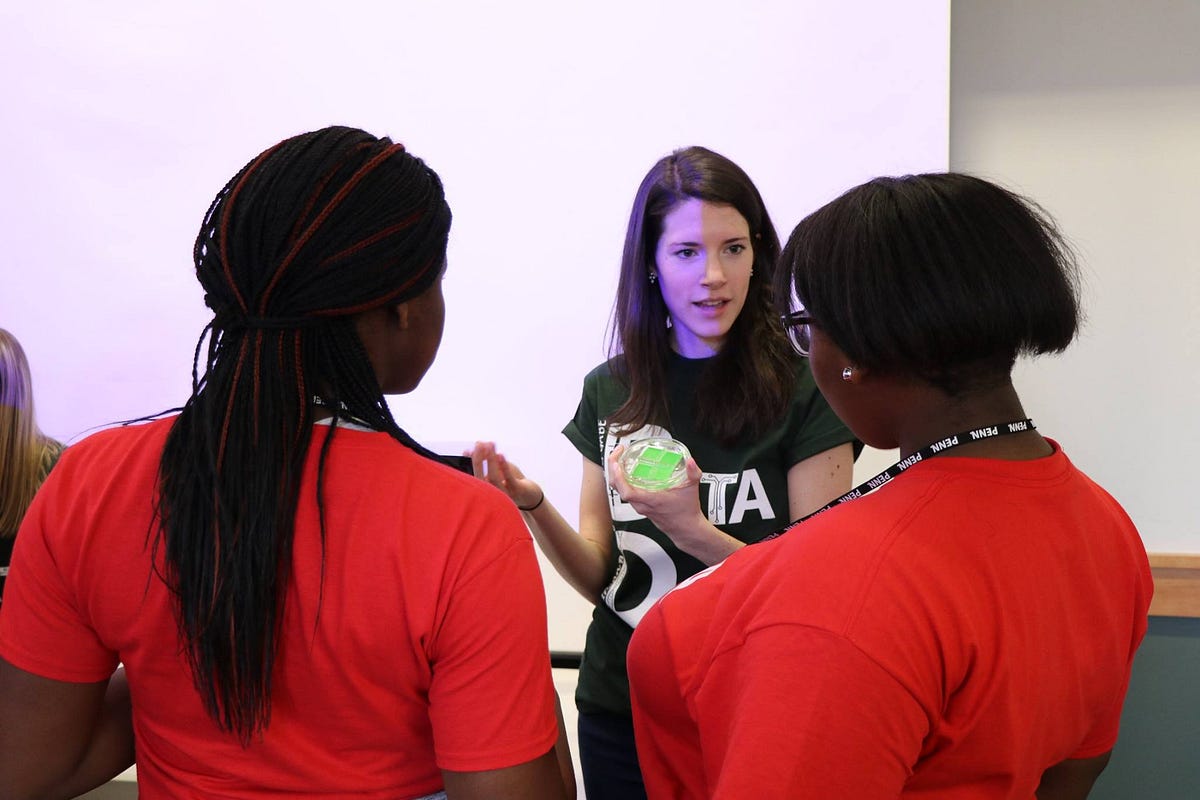
Junior BETA Day Brings Local Middle School Students to Bioengineering
A lack of diversity remains a challenge for the scientific research communities found in industry and academia. Although gains have been made in the last 50 years, professionals in STEM (science, technology, engineering, and math) fields are still predominantly male, with most minority communities underrepresented.
Partnering with local nonprofit iPraxis, Penn Engineering’s Department of Bioengineering (BE) sought to address this gap when they developed and hosted Junior BETA Day, where students from four Philadelphia middle schools spent a day in January with students and faculty from BE. Participants had the unique opportunity to visit engineering laboratories, see live demonstrations, and hear lectures from departmental faculty members.
According to its program director, Leann Ayers, “iPraxis is focused on providing enrichment opportunities in STEM areas, with a primary focus on the middle school grades.” Standing for “Bioengineering Teach-Aspire,” BETA Day has its roots in one of iPraxis’s regular activities: having engineers deliver presentations to students.
“These presentations had always been popular for us,” Ayers says, “but the presenters expressed frustration that they didn’t have any lab equipment available, and a lot of interesting demonstrations are difficult to transport. BETA Day was a response to that.”
Following a greeting by David Meaney, Solomon R. Pollack Professor and chair of the department, attendees heard an opening given by Arjun Raj, associate professor in BE, who spoke to the students about genetic engineering and gene editing. Following a dose of robotics courtesy of the University’s interdisciplinary General Robotics, Automation, Sensing and Perception (GRASP) Laboratory, participants attended presentations in three BE labs.

Graduate students from the McKay Orthopaedic Research Laboratory showed the students an Instron Electromechanical Testing Machine, which they used to measure the mechanical properties of paper, pasta, and finally tissue scaffolds used for a broad range of biomechanical applications.
In the George H. Stephenson Foundation Undergraduate Bioengineering Laboratory, the students learned about electromyography and reflex responses. There, they used high-tech equipment to see how something as seemingly simple as one’s knee reflex sets off a number of electrical signals across the body.
“It was exciting to be able to give middle school students the opportunity to use the same state-of-the-art lab facilities and educational tools that we use to educate our undergraduate bioengineers,” said Sevile Mannickarottu, director of instructional laboratories for the department. “The graduate student volunteers did an amazing job of explaining the concepts and giving hands-on experiences to the students.”

Finally, in the Biologically Inspired Engineering Systems lab, led by Dan Huh, assistant professor in BE, the students were given a demonstration of “organ-on-a-chip” technology, devices the size of USB drive that mimic the function of their real-life counterparts using microfluidic channels and living cells. There, the students learned about surface tension and microfluidics using common materials like milk and soap, before being shown and interacting with an eye-on-a-chip, able to blink in response to external stimuli.
According to Huh, the experience “provided the students with the opportunity to have a hands-on look at various aspects of our research and to indirectly experience the interdisciplinary research environment offered by our program and Penn.”
Following the laboratory demonstrations, the final activity of the day featured a lecture given by Danielle Bassett, Eduardo D. Glandt Faculty Fellow and associate professor in BE, in which she and students from her research group used audience participation to teach students about the network architecture of communication patterns in the human brain. The team of researchers covered the features of networks that make them best at information processing versus information transmission.
Students were then divided into small groups to construct network models using ZomeTools — simple ball-and-stick pieces traditionally used to teach mathematics and geometry — that optimized either information processing or information transmission. After closing remarks, students took selfies with their models before dismantling them for cleanup.
In total, 58 students, 7 teacher and parent sponsors, and 29 student volunteers from Penn participated in this year’s Junior BETA Day. “I think it was a great experience for the students,” Ayers said. “The diversity of the graduate students who participated, in terms of both gender and ethnicity, was terrific.”
Jeremiah White, founder and president of iPraxis, concurs. “I want these students to see and understand in a real-world environment what roles are available to them,” he says. “I’m not necessarily trying to get them to be engineers; I’m trying to get them to understand that, in the field of engineering, there are a million opportunities for them to pursue.”
